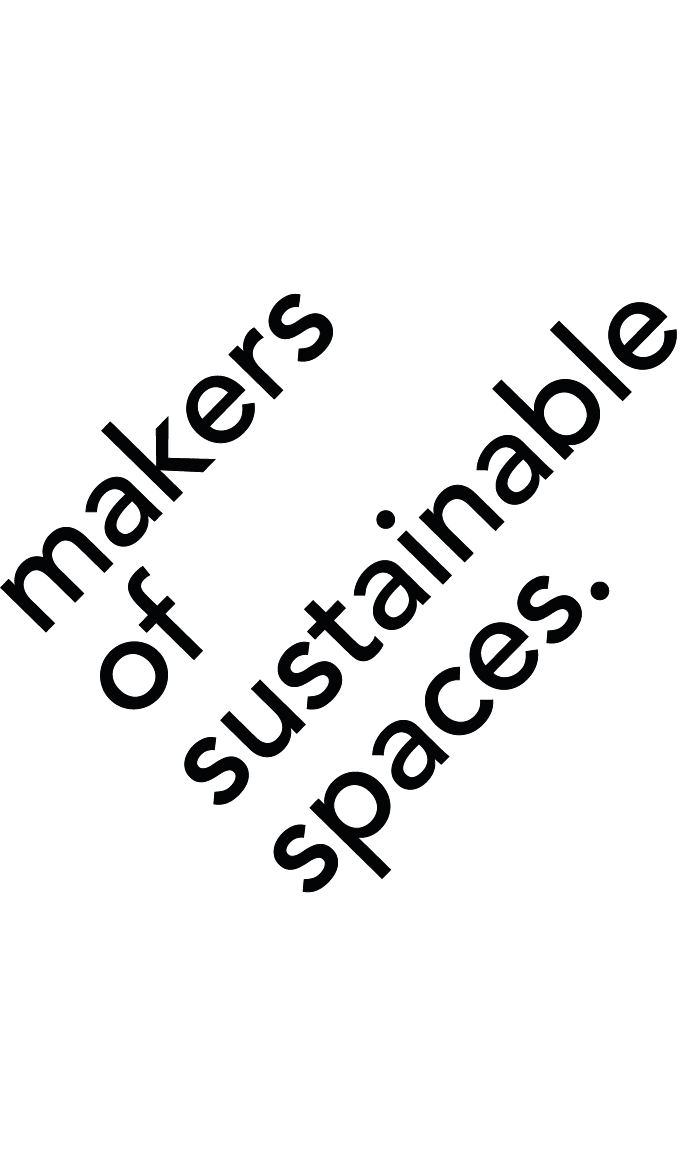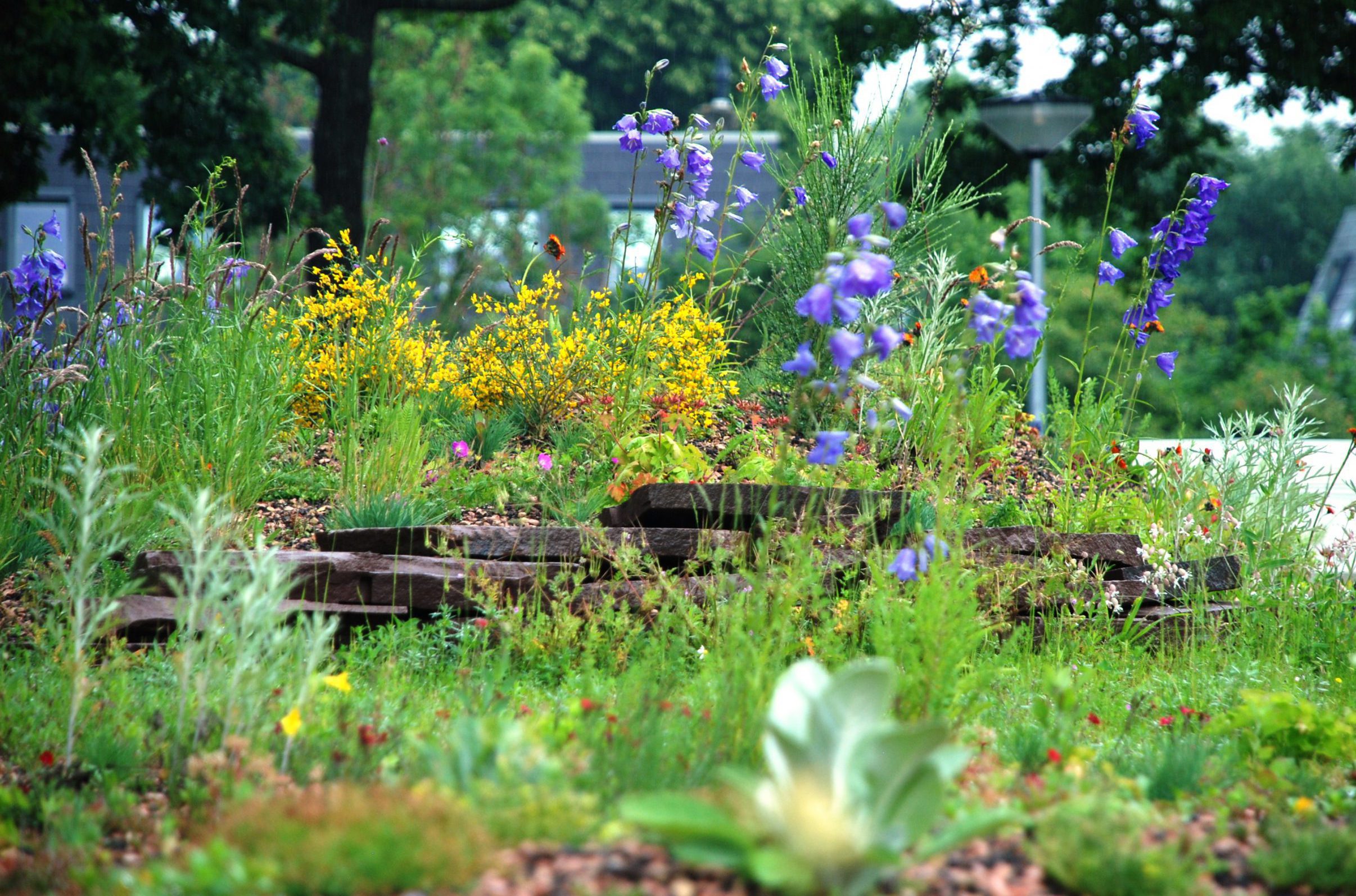

24 Oct A Talk About Plants: Interview with Annemieke Langendoen
Author: Eirini Trachana
Keywords: Sustainable Urban Landscapes, Landscape Architecture, Native Species in Urban Design, Contextualized Landscaping, Urban Biodiversity, Ecological Succession, Green Design, Environmental Sustainability, Landscape-Based Urbanism, Urban Planting Schemes, Green Urban Development, Adaptive Landscape Design
Introduction: A Conversation about Plants
MOSS seeks interviews with experts in planting and design to get inspiration, exchange knowledge, and get different perspectives. Annemieke Langendoen is a leader in resilient planting design, practicing a unique and innovative approach that emphasizes adaptability, experimentation, and sustainability. With over three decades of experience, she has advocated for dynamic, low-maintenance gardens that thrive in changing conditions. MOSS Green Designer Eirini Trachana was lucky to sit down with Annemieke for a talk about plants, which will be discussed in the following blog! Together, Eirini and Annemieke discussed their shared passion for plants. This was a wholesome conversation on biophilic knowledge and observation, biodiversity, the development of landscaping techniques in the Netherlands, and the value of light and color in designs. Below, we’ve highlighted the main points of the conversation:
- Early Career and Principles of Design
- Development of Landscape Design in the Netherlands
- Native Species vs Exotic Species
- The Role of Light in the Garden
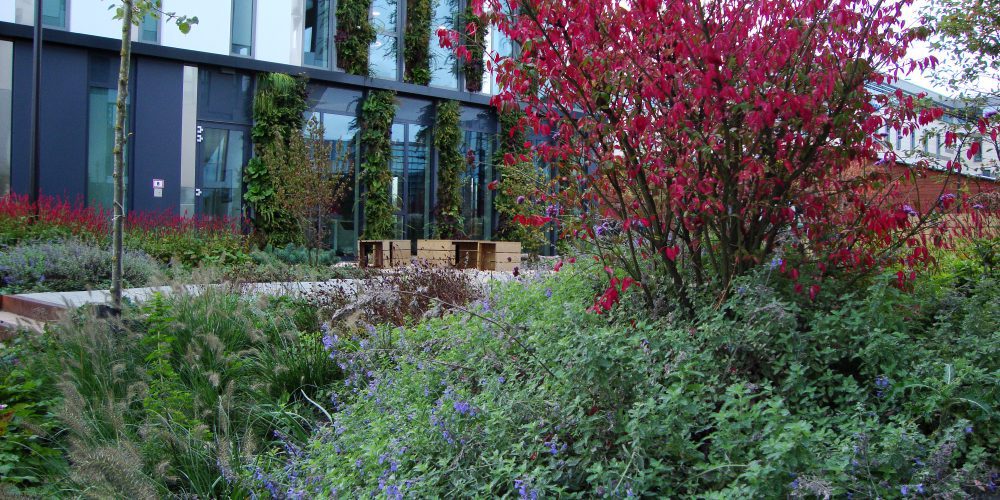

Early Career and Principles of Design
Annemieke has vast, inspiring experience in the field of landscape design. She recalled that she always knew she wanted to work with nature and plants or study at an art academy:
“When I was a kid, I wanted to be a forester, but after a while, I realized that I needed to carry a gun and this profession is not only about being in the forest and caring for the forest and the animals living there.”
When she discovered that garden design combines both nature and drawing, she realized that this was the right path for her, and she started directly after her studies with a job in planting design. At the beginning of her career, she enjoyed developing a personal design philosophy on garden and planting design. This philosophy centered on flexible planting schemes that evolve over time.
“During my first years in this job, I had the freedom to design small-scale gardens and roof gardens. I made the rule that I still apply; 10% of the garden surface will be used for experimental planting and 90% will be covered with hardy plants that will guarantee a good base. Then we always go back one year later and also a few years later to see how the planting developed with time and ask the people involved in the maintenance about this development. This is how we learn.”
The freedom of experimentation is a valuable tool for a designer to learn how plants behave in the garden. In a process where experimentation is communicated transparently to the client, the work becomes a fun, interactive process. Garden design is unique because the materials are extremely dynamic. Plants are living things which grow differently according to the conditions we give them:
“A plant is different from place to place. You can see a plant living in areas with sandy soils and it looks completely different when you see it in peaty soil. Digital pictures give a lot of information but how did you feel when you saw this plant in real life? Working with plants is making notes and then recalling the memory.”
To achieve this connection with nature, MOSS organizes excursions and nursery visits to study the plants on the spot. Nature is complex, but this challenge of working with living materials is what fascinates us and fuels us to continue learning!
The development of landscape design in the netherlands
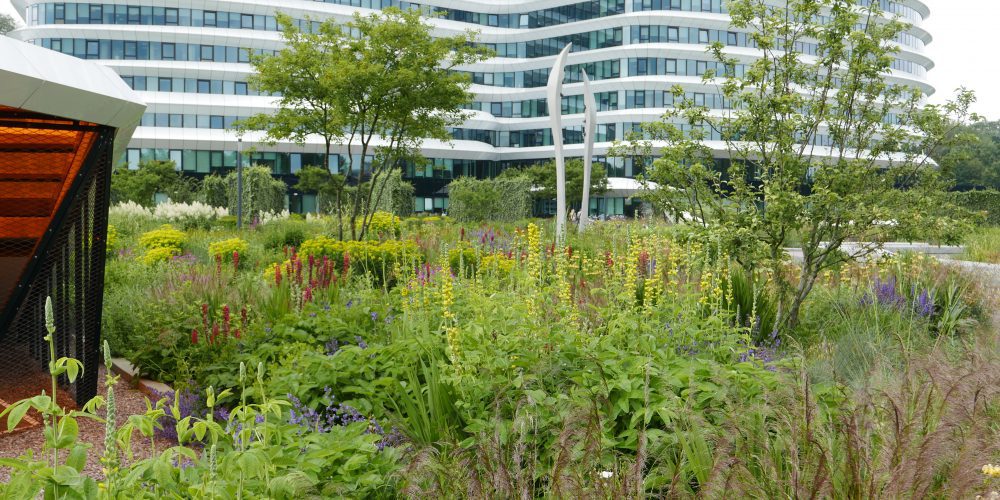

Landscape design in the Netherlands has developed significantly in the past 35 years. Annemieke explained that when she first began working in this industry, she needed to follow certain rules. For example, one-third of the plants were required to be evergreen. Chemical use was prevalent and pruning was a common practice.
“Planting schemes were based on cheap maintenance because the gardens were usually attached to properties with social housing and the tenants didn’t have the money for a high-maintenance planting plan. We would select mostly shrubs.”
Shrubs were used because perennials could not survive or thrive when the soil was contaminated with chemicals. The use of chemical weed control had only negative effects. Biodiversity was undermined, most plants, especially natives, were not tolerant to chemicals, and the aesthetics of the garden were highly compromised, especially in winter.
“I tried to convince the maintenance parties to stop using the chemicals for weed control but they were used to it. At the beginning of the century, chemicals were finally eliminated. This gave more opportunities to apply grasses, or flower carpets with perennials or herbs or use native plants. The weed was then controlled with the use of tough plants like Hypericum or Potentila. This made the maintenance affordable and we could experiment with perennials in the social housing gardens.”
Planting design develops with time towards wilderness and the acceptance of randomness. Designers embrace the uncertainty that this brings. Annemieke witnessed the gradual switch from fully manipulated gardens with roses and shrubs as the focal point, to wild plantings with a harmonious mix of native and non-native perennials. Now designers have much more freedom, and this enhances the need for intentional, mindful maintenance with knowledge of ecological principles. Following this approach, it is more important than ever to check back on the garden over time.
“In the garden that I designed in Groningen, I used the red Achillea (Achillea millefolium ‘Paprika’). For most visitors, it was their favorite plant. After two years the plant disappeared because things that work here might not work 200km away. You can try to predict it but sometimes it is better and more time-efficient to design the garden and deal with the issues that come later.”
Maintaining a connection to the design while embracing change fosters resilience and ensures that landscapes evolve in harmony with the dynamic nature of plants. Annemieke emphasizes the importance of observation and adaptation, finding beauty in different elements, and encouraging designers to create gardens that are not only beautiful but also resilient to change.
Seasonal Experience at Project Stadstuin Groningen
Designer: Baljon Landschapsarchitecten
Planting: Annemieke Langendoen
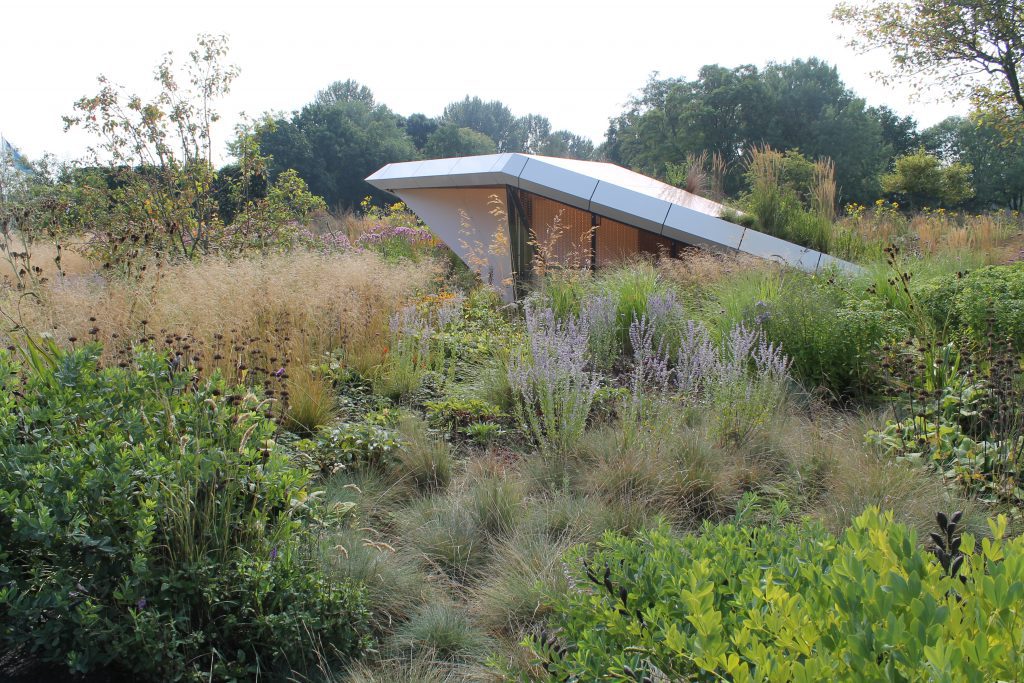

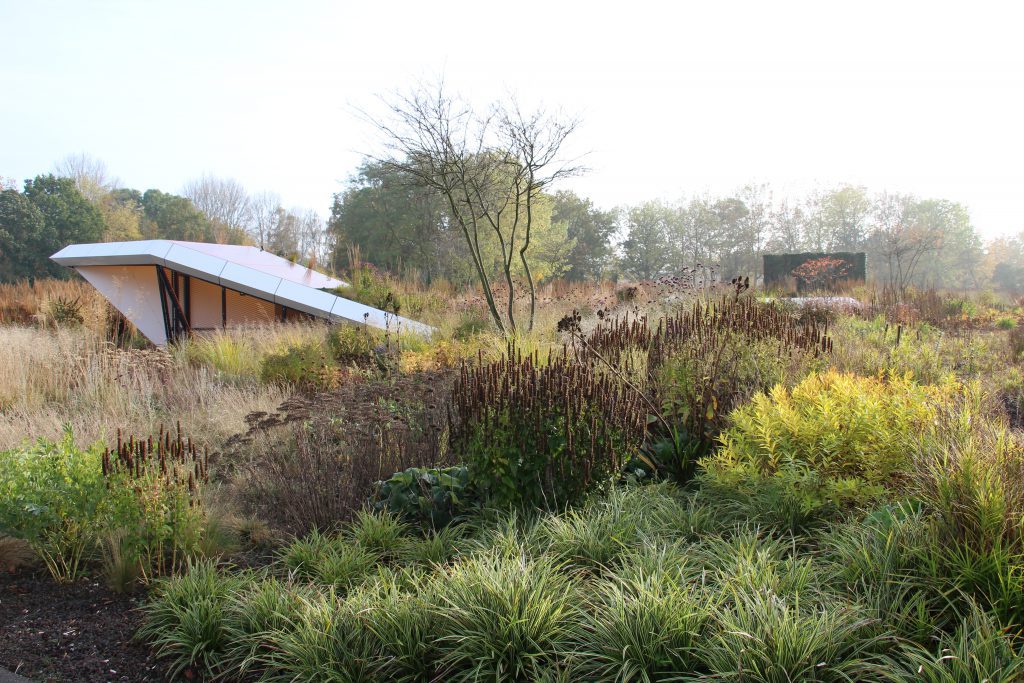

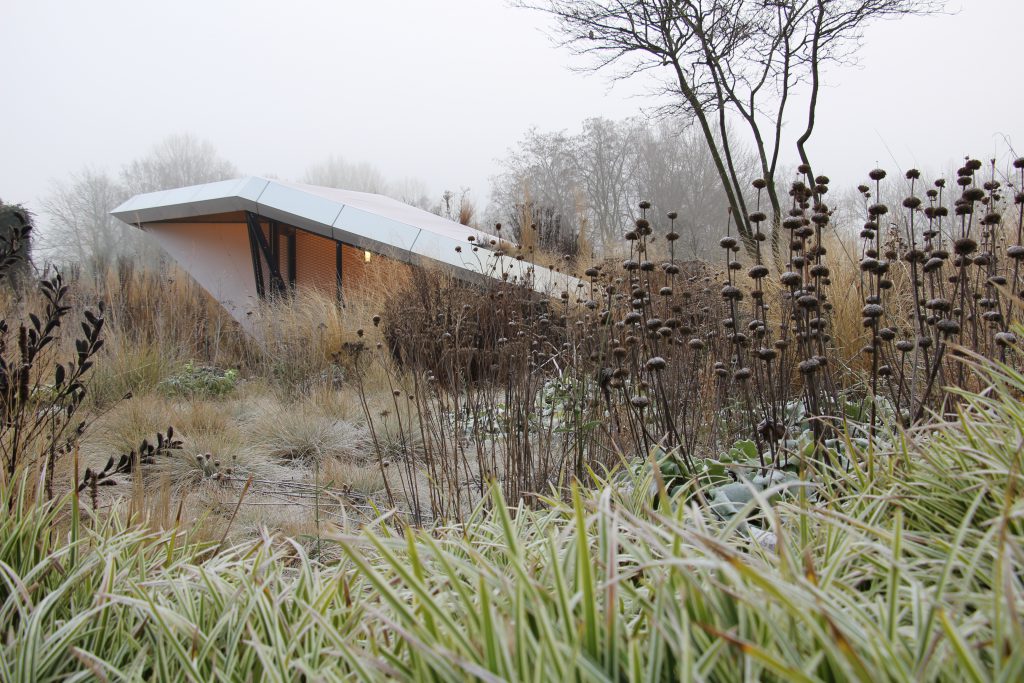

Native species vs Exotic Species
This is a hot topic in the landscape design community with the recent trends towards a more wild look and environmentally friendly design. Annemieke believes a designer can never commit to “I always use this or I never use this”; choices have to do with the design and the place. She offered an example from a conversation she had with a lector in Groendag in Hoorn:
“There was a part of one of Niek Heyboer’s designs that was supposed to be the “native part” but he put taxodium in; Taxodium is not native. It was a design choice, based on his vision for this place. All the other parts of the design were covered with native plants but the path towards the islands was made by a line of Taxodium trees, because of their roots which grow on top of the water in such a special way. Exotic and native can grow together.”
Annemieke has taken to using both native and exotic species. It can be difficult to make a “color spectacle” with a design using only native species, but when combined with exotic species, the two can complement each other wonderfully and also benefit local biodiversity.
“Thinking of the animals that live in the garden, what are their needs? They need nutrition, water, shelter, and a nesting place. When they find the garden, it is like a bubble, a protective space for them. They use exotic species to feed from, but they use the native, familiar plants to eat the leaves and to nest in.”
In the past, it was not easy to source native perennial plants because they were not considered ‘good plants’, in terms of aesthetics. Therefore, nurseries could not be relied upon to provide a sufficient supply. Designers eventually learned that natives are more important than originally believed.
“Bees, birds, and butterflies can find food and a lot of nectar in the exotic species but in the end, they choose the natives to sleep, nest, and reproduce. Knowing this information, we understand how important the natives are.”
Wageningen University, in collaboration with Kwekerij Lageschaar, is currently conducting further research on beneficial insects attracted by the planting, beyond just bees and butterflies. Additionally, it’s important to recognize that plants communicate and rely on each other, thriving as part of an interconnected system that includes the soil and its microorganisms, such as mycorrhiza, which play a vital role in their survival.


The role of light in a garden
Annemieke expressed a preference for contrast in a garden, finding juxtaposition in the plants or the shapes of plants, which can also be affected greatly by the use of light
“When I start with a planting plan, I think about the light! How does it enhance the plants, and how does it interact with them throughout the seasons? For instance, with plants like Hamamelis, when light filters through, it creates a magical effect. When sunlight shines directly on the plant, it becomes bright and vibrant, bringing a sense of joy. The goal is to capture that magical moment of sunlight streaming through, just outside your home.”
By employing techniques that highlight seasonal changes, Annemieke’s designs become dynamic, engaging landscapes that remain resilient throughout the year. Her emphasis on light and timing enriches the sensory experience, inviting people to connect with the beauty of nature in a meaningful way.
“I always look at this in gardens, how I can put the plants in the right place so the sun can play with it, and you can see it, you can feel it. Gardens are interesting when they are working with that principle. That’s why I can’t say which garden is my favorite because It always has to do with the moment as well.”
Thus, light, warmth, and color play a transformative role in Annemieke’s designs, influencing both plant selection and placement to craft vibrant seasonal experiences. This attentiveness to how light interacts with plants adds liveliness, as each garden shifts with the passing hours and seasons.
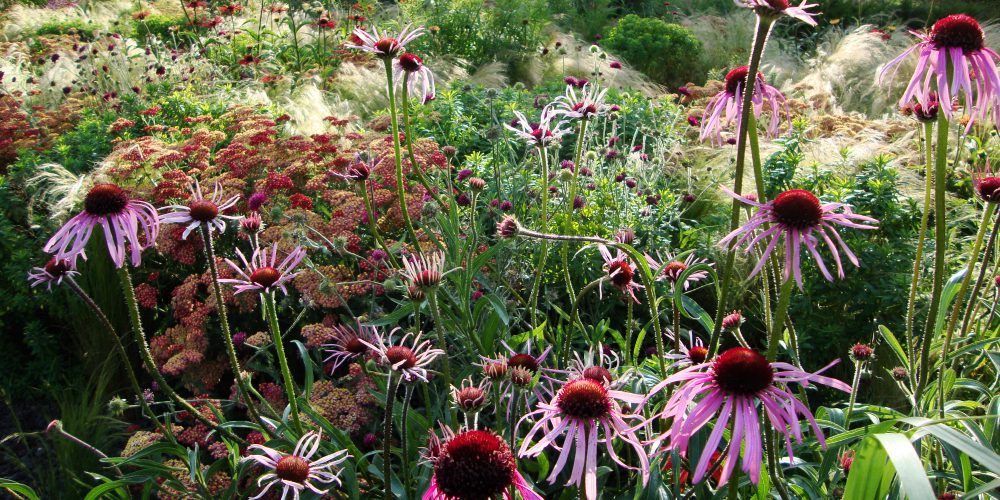

Conclusion
In conclusion, Annemieke Langendoen’s approach to resilient planting design is a testament to the power of adaptability, experimentation, and a deep understanding of natural processes. Her ability to blend native and non-native species, consider the dynamic role of light, and embrace the evolving nature of plants results in vibrant, sustainable landscapes that are both functional and beautiful. Annemieke’s insights demonstrate that successful garden design requires not only technical knowledge but also a profound connection to the environment, with each decision contributing to a harmonious and ever-changing relationship between plants, people, and nature.
